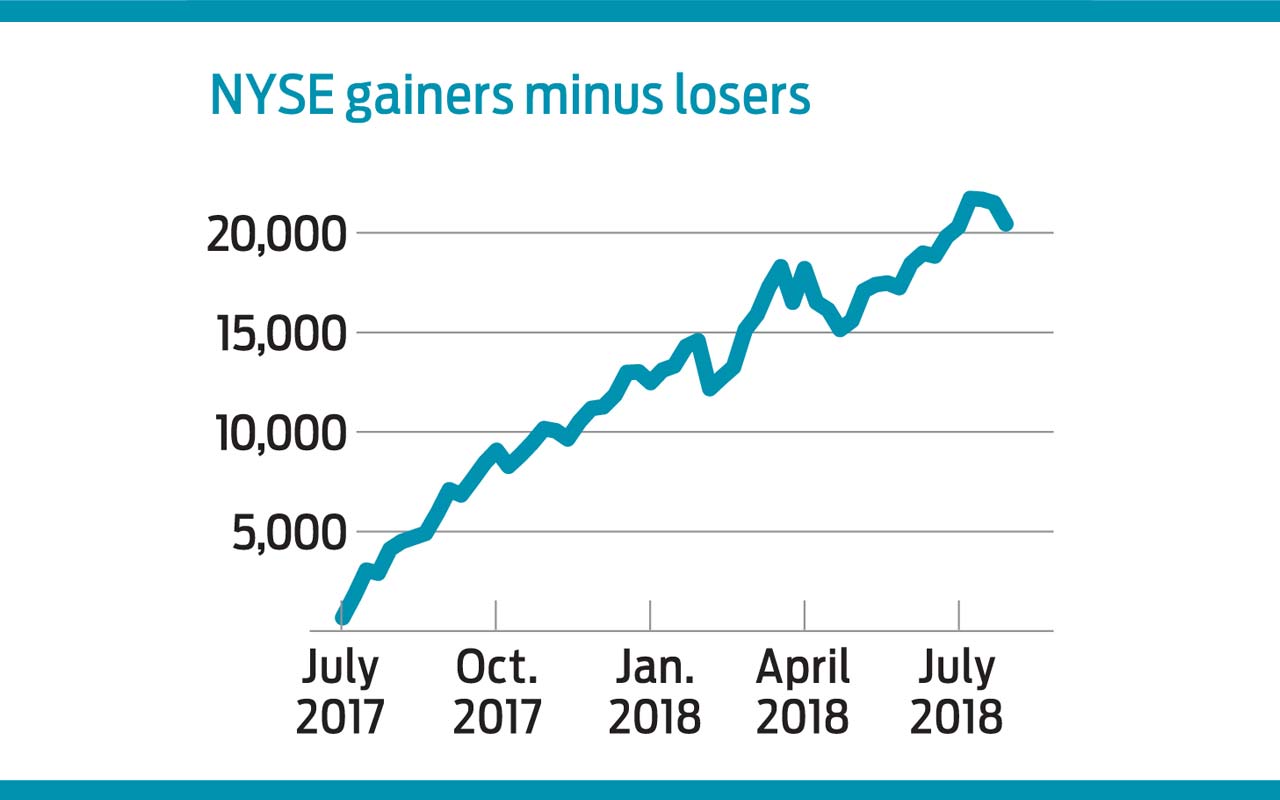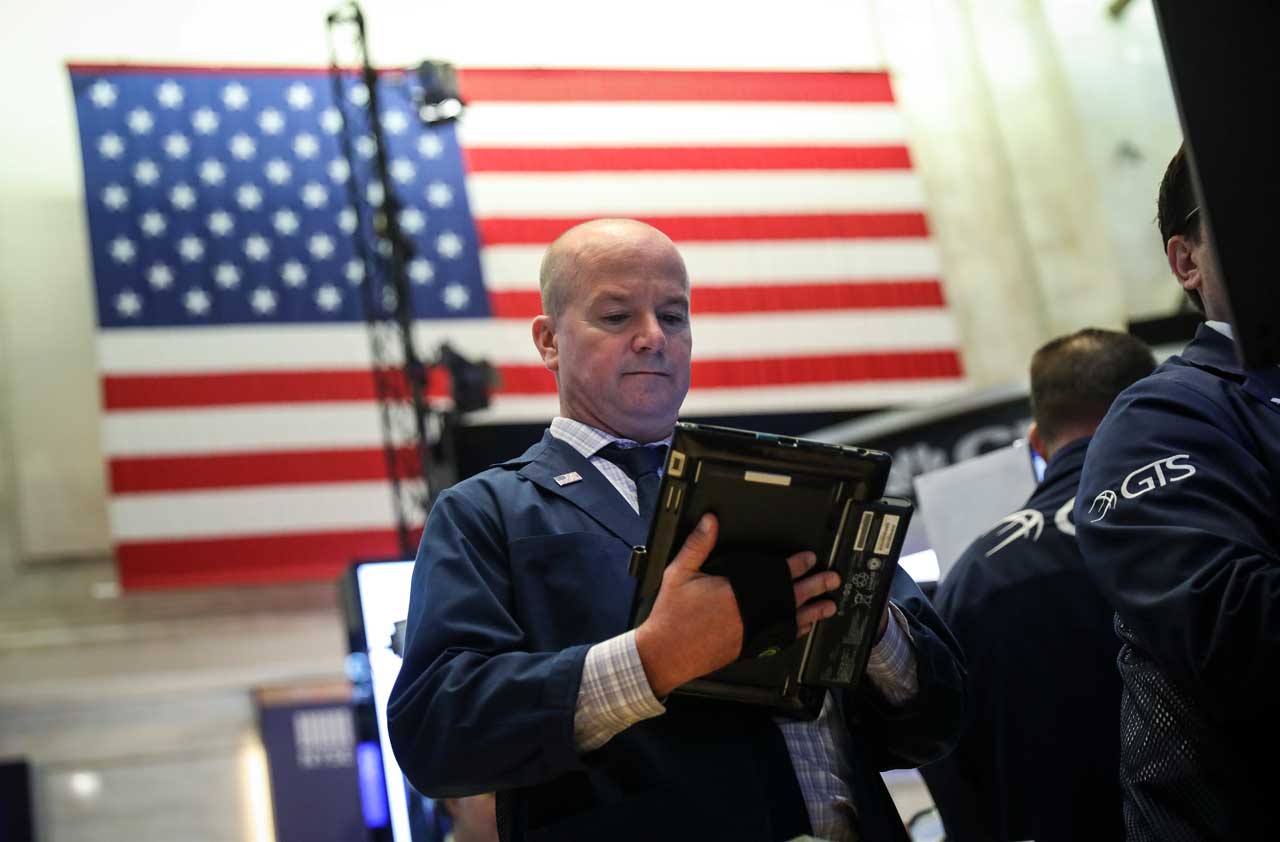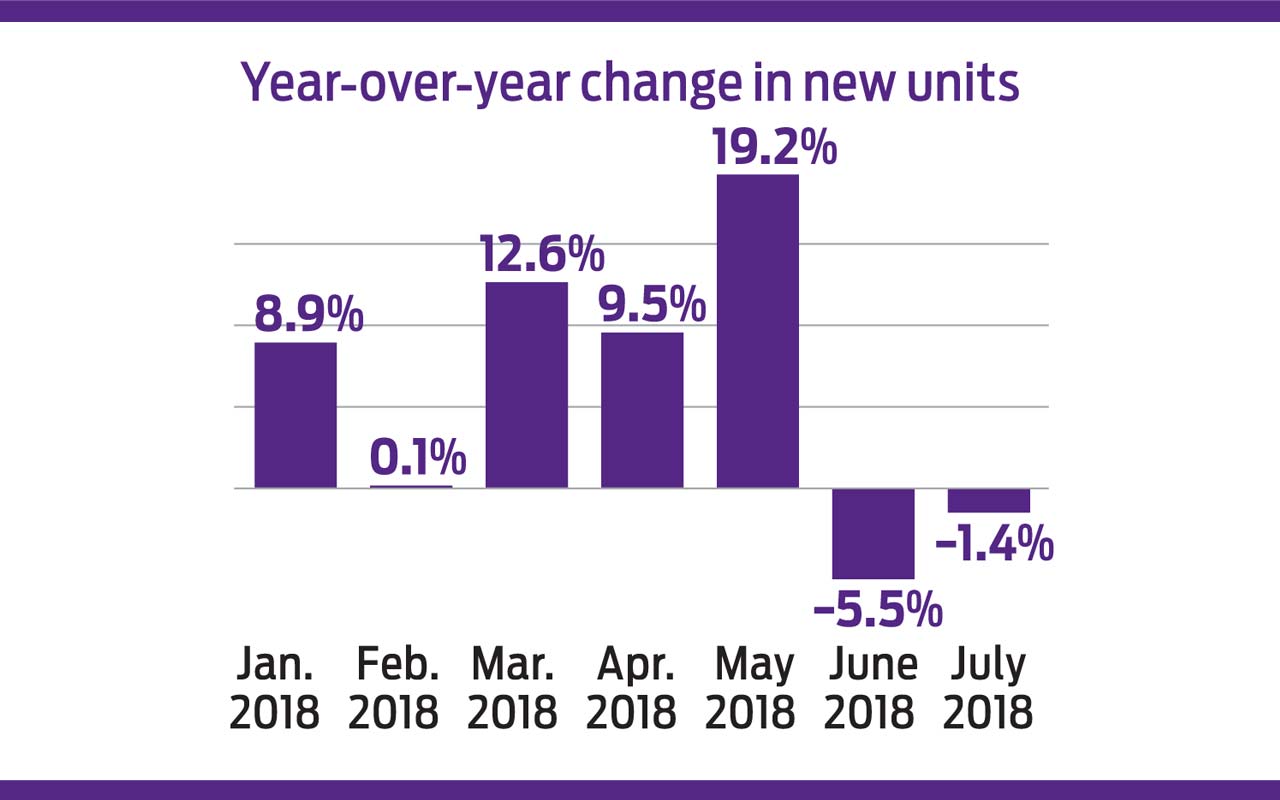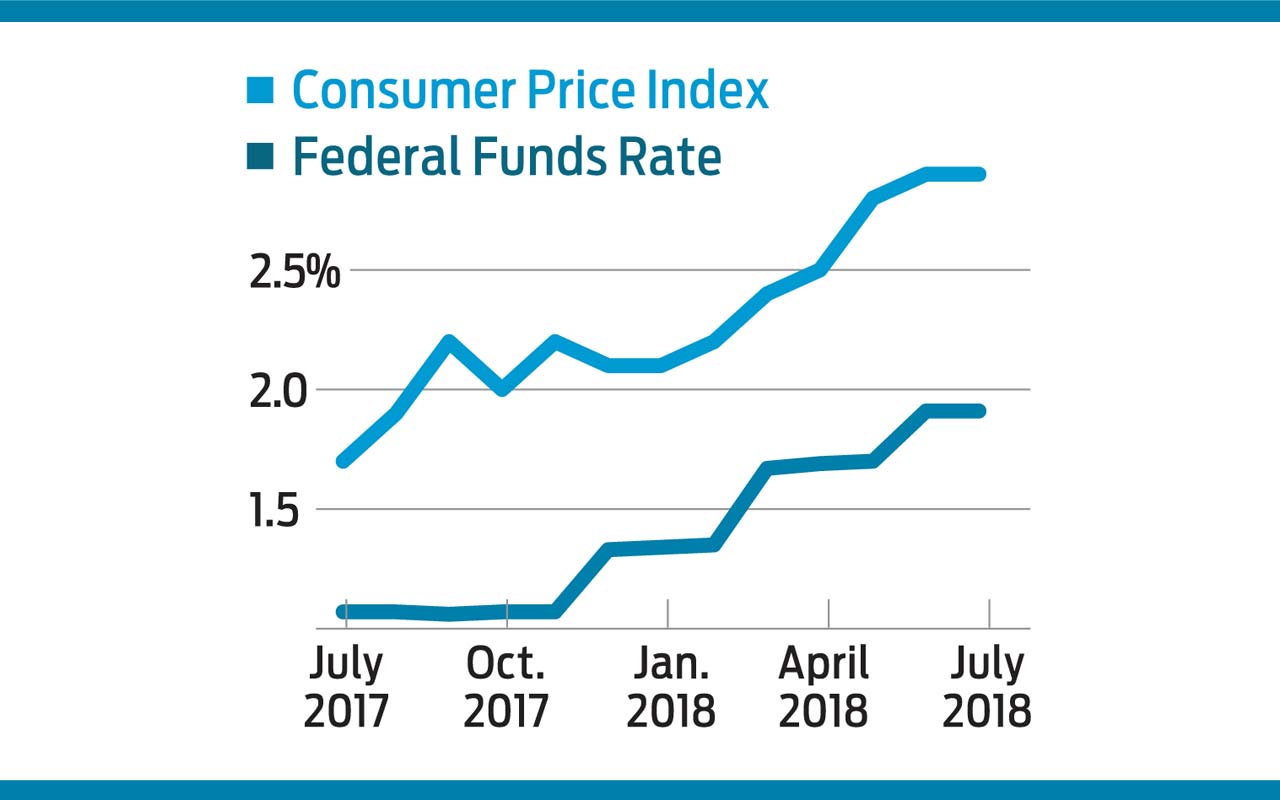5 Signs to Watch for a Stock Market Peak
It’s no secret that the current bull market and economic expansion are getting long in the tooth.


It’s no secret that the current bull market and economic expansion are getting long in the tooth. Eventually, the market will turn bearish, and history tells us that we’re likely to see a recesssion six to nine months after the bull market’s peak.
These five indicators can help you spot market tops and recessions on the horizon. Think of them as alarm bells. None is ringing loudly at the moment, but if several go off in unison, consider paring back risk in your portfolio.

Consumer Confidence
- The indicator: The Conference Board’s Consumer Confidence Index, released monthly, tracks consumers’ attitudes about business and economic conditions.
- Why watch it: Consumer spending drives nearly 70% of U.S. economic activity. “A sharp drop in confidence implies that a recession is imminent,” says Ed Clissold, chief strategist at investment research firm Ned Davis Research. On average, recessions have occurred when the index dips to a level of 63 or below, he says.
- What it says now: At 133.4, the Conference Board index is far from recession territory, says Clissold.

Market Breadth
- The indicator: The advance-decline line represents the cumulative number of NYSE stocks with advancing share prices minus those that are declining, plotted over time.
- Why watch it: The A-D line tells you how many stocks are participating in a trend. If the generals are charging while the troops are in retreat, a bear market may be on the horizon, says James Stack, publisher of InvesTech Research.
- What it says now: Although tech titans make headlines, the market’s gains remain broad-based, says Clissold. The A-D line has stayed positive this year as U.S. indexes have climbed.

Market Leadership
- The indicator: The number of stocks hitting new 52-week highs or lows on the New York Stock Exchange.
- Why watch it: The number of stocks hitting new highs or lows can signal whether bulls or bears are driving market sentiment—whether the overall market is trending up or down. In a healthy market, fewer than 50 stocks per day on the NYSE sink to new lows, says Stack. One hundred in a day could be a temporary blip. But if you see 100 per day over several weeks, it’s a sign that bearish leadership is building.
- What it says now: Aside from a spike in February, new lows have hovered between 20 and 40 in 2018. But note that new highs typically peak one year, on average, prior to market tops. The peak for new highs in the current market was in December 2016.
QUIZ: Test Your Bear Market Knowledge

Housing Starts
- The indicator: The monthly report from the U.S. Census Bureau that tallies housing starts—the number of new homes breaking ground—compared with the same month a year ago.
- Why watch it: Housing starts indicate economic strength. “Who is going to buy a house if they’re not certain they’ll keep their job?” says Sam Stovall, chief strategist at investment research firm CFRA. Within three months of every recession since 1960, housing starts have logged a double-digit decline compared with the same month in the previous year. Average prerecession drop: 25%.
- What it says now: June figures show a 1.4% dip year-over-year, on top of a 5.5% decline a month earlier.

The Fed & Inflation
- The indicators: The Consumer Price Index, a measure of inflation, and the federal funds rate—the interest rate, set by the Federal Reserve, at which banks lend each other money overnight.
- Why watch them: Historically, bear markets have begun when the fed funds rate far exceeds inflation, says Stovall. Since 1959, the market has entered bear territory when the fed funds rate exceeds inflation by 2.7 percentage points, on average.
- What they say now: At a current annual rate of 2.7%, inflation exceeds the fed funds rate by less than a percentage point. But Stovall expects inflation to fall below the fed funds rate by the third quarter of 2019, as the Fed continues to hike rates.
Get Kiplinger Today newsletter — free
Profit and prosper with the best of Kiplinger's advice on investing, taxes, retirement, personal finance and much more. Delivered daily. Enter your email in the box and click Sign Me Up.

Ryan joined Kiplinger in the fall of 2013. He wrote and fact-checked stories that appeared in Kiplinger's Personal Finance magazine and on Kiplinger.com. He previously interned for the CBS Evening News investigative team and worked as a copy editor and features columnist at the GW Hatchet. He holds a BA in English and creative writing from George Washington University.
-
 Stock Market Today: Stocks Soar on China Trade Talk Hopes
Stock Market Today: Stocks Soar on China Trade Talk HopesTreasury Secretary Bessent said current U.S.-China trade relations are unsustainable and signaled hopes for negotiations.
By Karee Venema
-
 2026 Disney Dining Plan Returns: Free Dining for Kids & Resort Benefits
2026 Disney Dining Plan Returns: Free Dining for Kids & Resort BenefitsPlan your 2026 Walt Disney World vacation now. Learn about the returning Disney Dining Plan, how kids aged three to nine eat free, and the exclusive benefits of staying at a Disney Resort hotel.
By Carla Ayers
-
 The Economic Impact of the US-China Trade War
The Economic Impact of the US-China Trade WarThe Letter The US-China trade war will impact US consumers and business. The decoupling process could be messy.
By David Payne
-
 What DOGE is Doing Now
What DOGE is Doing NowThe Kiplinger Letter As Musk's DOGE pursues its ambitious agenda, uncertainty and legal challenges are mounting — causing frustration for Trump.
By Matthew Housiaux
-
 A Move Away From Free Trade
A Move Away From Free TradeThe Letter President Trump says long-term gain will be worth short-term pain, but the pain could be significant this year.
By David Payne
-
 Trump’s Whirlwind Month of Crypto Moves
Trump’s Whirlwind Month of Crypto MovesThe Kiplinger Letter The Trump administration wants to strengthen U.S. leadership in the cryptocurrency industry by providing regulatory clarity.
By Rodrigo Sermeño
-
 What Could Derail the Economy This Year?
What Could Derail the Economy This Year?The Letter While the outlook for the U.S. economy is mostly favorable, there are plenty of risks that bear watching.
By David Payne
-
 Three Ways President Trump Could Impact the Economy
Three Ways President Trump Could Impact the EconomyThe Letter Some of Trump's top priorities could boost economic growth, but others risk fueling inflation.
By David Payne
-
 The Cheapest Places To Retire in the US
The Cheapest Places To Retire in the USWhen you're trying to balance a fixed income with an enjoyable retirement, cost of living is a crucial factor to consider.
By Stacy Rapacon
-
 10 Predictions for 2025 from The Kiplinger Letter
10 Predictions for 2025 from The Kiplinger LetterThe Kiplinger Letter As 2025 arrives, here are our top 10 forecasts for the new year.
By Letter Editors
